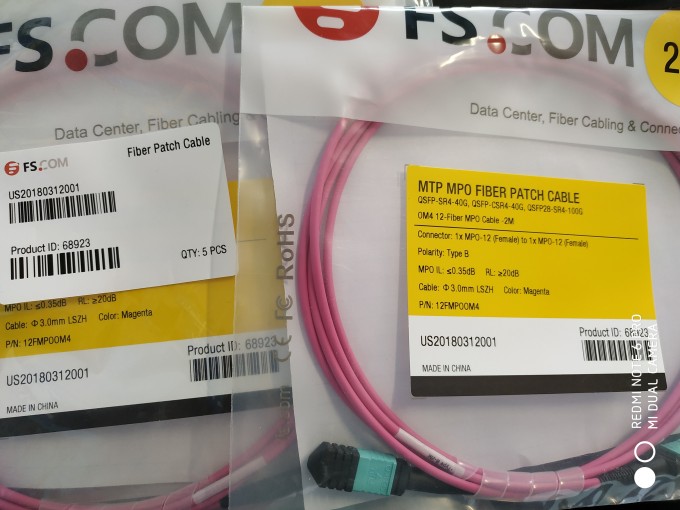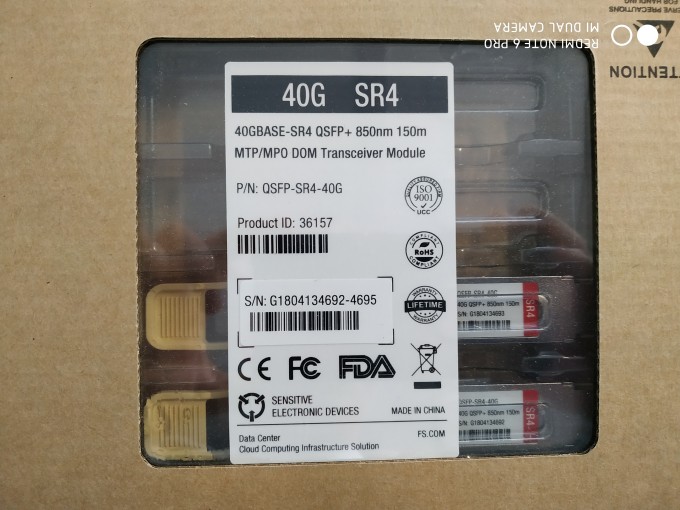Chestnut: Specifications and Interfaces
Chestnut is a high channel count, ultra wide band, high gain, direct conversion quadrature transceiver and signal processing platform. Providing simultaneous support for 4 receive and 4 transmit fully independent radio channels, this flexible platform uses four 40GBASE-R qSFP+ ports to quickly receive and transmit radio data. With a standard instantaneous bandwidth of 500MHz, 16 bit converter resolution, and a tunable RF range between 100kHz to 9GHz, Chestnut aims to provide end users with the best possible value from a high end software defined radio platform offered by a commercial vendor. Chestnut is compatible with various signal processing tool kits, including GNU Radio and includes source code for many of its drivers and peripherals.
Note
Chestnut is capable of digital up/down conversion, so superhet architectures can be implemented using digital up/down conversion on the FPGA.
Absolute Maximum Ratings
Stresses beyond those listed in the Absolute Ratings Table 1 may cause permanent damage to the device. These ratings are stress specifications only. Functional operation of the product at these conditions is not implied. Exposure to absolute maximum rating conditions for extended periods of time may affect reliability and is, therefore, not recommended.
Warning
 |
EXCEEDING ABSOLUTE RATINGS MAY DAMAGE DEVICE AND MAY CAUSE DANGEROUS FIRE OR ELECTRICAL HAZARDS Exceeding these ratings may substantially damage device, and the resulting hazards may cause serious personal injury or death. |
Table 1: Absolute Ratings: Exposure or sustained operation at absolute ratings may permanently damage Chestnut. Ensure fan inlets (located on both sides of the device) are not blocked during operation.
| Specifications | Min | Max | Units | Notes |
|---|---|---|---|---|
| Operating Temperature | 5 | 30 | C | At fan inlet |
| Operating Humidity | 5 | 100 | % | Non-Condensing |
| Storage Temperature | 0 | 40 | C | |
| Storage Humidity | 20 | 95 | % | Non-Condensing |
| Input RF Power | 10 | dBm | Do not exceed. | |
| IO and TRIG Voltage | 1.8 | V | Do not exceed: Direct to FPGA. | |
| External Reference | 3 | Vpp | Do not exceed. | |
| SMA Torque | 0.6 | 0.7 | Nm |
Specifications
Chestnut is a very flexible radio and signal processing platform that supports high bandwidth communications over a wide tuning range. Specific performance measurements are subject to change. Additional performance figures are provided as an appendix to this manual; for specific measurements, please contact Per Vices.
To provide a general idea of what this product is capable of, Table 2 lists some conservative figures of its out-of-box performance. Configuration of the product towards a specific application may see some of these figures exceed at the expense of others. For more information, please do not hesitate to contact us.
Table 2: Observed Performance. These specifications reference observations taken during internal use and development, and are subject to change. Calibration Measurements relative to 20˚C
| Specification | Min | Nom | Max | Units | |
|---|---|---|---|---|---|
| Common Radio | RF Stage (ADF4355) | 0.1 | 9000 | MHz | |
| Baseband Stage | 0.1 | 140 | MHz | ||
| Dynamic Range | 25 | 70 | dB | ||
| SFDR | 65 | dB | |||
| Receive Radio | RF Input Power | -40 | dBm | ||
| Noise Figure, Rx RF St | 3.1 | 7 | dB | ||
| Power Gain Low | 15 | 45 | dB | ||
| Power Gain High | -10 | 65 | dB | ||
| Group Delay (Radio Chain)\(^{1}\) Low | 13.7 | ns | |||
| Group Delay (Radio Chain)\(^{1}\) High | 20 | ns | |||
| ADC (Receive Converter) | Independent Channels | 4 | - | ||
| ADC resolution | 16 | bits | |||
| ADC Sample Rate | 500 | 500 | MSPS | ||
| Rx Sampling Bandwidth | 500 | MHz | |||
| Latency (input to serial)\(^{1}\) | 50 | ns | |||
| Receive DSP and FPGA Specs (default Firmware) | Decimation \(\left(\frac{f_{s}}{n}\right)\) | 1 | 256 | - | |
| Latency (FPGA DSP)\(^{1}\) | 50 | 500 | 750 | ns | |
| Transmit Radio | Transmit Power Low | -30 | 18 | dBm | |
| Transmit Power High | -10 | 15 | dBm | ||
| Group Delay (radio chain)\(^{1}\) Low | 5 | ns | |||
| Group Delay (radio chain)\(^{1}\) High | 11 | ns | |||
| DAC (Transmit Converter) | Tx Output Bandwidth | 500 | MHz | ||
| DAC resolution | 16 | bits | |||
| DAC Sample Rate | 500 | MSPS | |||
| Latency (serial to output)\(^{1}\) | 50 | 655 | 804 | ns | |
| Transmit DSP and FPGA | Interpolation (\(n\cdot f_{s}\)) | 1 | 256 | - | |
| Specifications | Latency (FPGA DSP)\(^{1}\) | 96 | 160 | ns | |
| Digital | FPGA - Arria 10 | - | |||
| On Board Processor Core | ARM Cortex-A9 | MP | |||
| LPDDR2 RAM | 4 | Gb | |||
| NAND Flash (x8) | 4 | Gb | |||
| Networking | 40GBASE-R, Full Duplex\(^{2}\) (each) | 160 | Gbps | ||
| Default IP, SFP+ Port A | 10.10.10.2 | - | |||
| Default IP, SFP+ Port B | 10.10.11.2 | - | |||
| Default IP, SFP+ Port C | 10.10.12.2 | - | |||
| Default IP, SFP+ Port D | 10.10.13.2 | - | |||
| Int. Reference (10MHz) | Frequency Stability | -5 | 5 | ppb | |
| Ext. Reference (10MHz) | Input Voltage Swing | 2.2 | 2.4 | 3 | Vpp |
| IO, PPS, and TRIG | FPGA IO Voltage Range | 0 | 2.5 | 2.6 | V |
\(^{1}\)For additional information on latency, please contact us or refer to the Application Note on Latency.
\(^{2}\)For additional information on bandwidth and sample rate, we have an Application Note that might be of interest.
External Interfaces
Chestnut has a number of user accessible interfaces through which the device can connect to external sources and sinks. Management functions are carried out over a web page hosted by the Chestnut transceiver and accessible using the Management Ethernet port on the front face of the device. Data is sent over the 40Gbps qSFP+ ports and receive and transmit antennas connect to the SMA connectors on the front of the device. Other peripherals ports provide access or the capability to improve functionality.
-
1Gbps Management Port: connects to the on-board HPS, located on the FPGA silicon, and provide a unified interface by which to control and configure the platform.
-
40GBASE-R qSFP+: there are four qSFP ports on the front panel of the device that use 40GBASE-R encoding to directly communicate with an optical module and interface with a forty gigabit network. These ports directly interface with the FPGA fabric and support high bandwidth, low latency communication between the ADCs and DACs.
-
50\(\Omega\) SMA: There are eight standard SMA radio headers the front of the unit. These are used to connect to external antennas, sinks, or sources, including:
channels count description Rx 4 The eight independent receive channels may be connected to external sources or antennas Tx 4 The eight independent transmit channels may be connected to external antennas or sinks -
USB 2.0 A USB port connects to the Linux system running on the Hard Processor System.
- Micro-SD Slot The FPGA and Hard Processor System may be rebooted or configured using an external Micro-SD card.
- Debug Mini-DSUB The debug port provides JTAG access, and allows for the complete configuration of the unit.
- Trigger Mini-DSUB The trigger port provides access to independent, per-channel, triggers for each radio resource.
- IEC320 C14 Power A standard «computer» cable plugs into this connector to power the unit. The power supply accepts 120V or 240V.
Operating System
Although Chestnut may be used with any operating system, we strongly recommend using a Linux operating system. This ensures you will be able to take advantage of a very large body of high performance that exists to support high performance computing Chestnut applications, while also providing a more comprehensive development environment. It will also allow users to more easily use our existing example code, and also provides for a higher performance computing environment. It is also possible to SSH into the small Linux distribution running on the on-board processor.
Network Interface Card (NIC) Requirements
Chestnut uses a 40Gbps Ethernet connection to quickly send and receive data. The following network cards have been tested for compatibility with Chestnut. The recommended NICs for Chestnut are:
| Manufacturer | MPN | Line Rate |
|---|---|---|
| Mellanox | MCX516A-CDAT | Regular |
| Napatech | NT200A02-2×100/40 | High-throughput |
If you have any questions or concerns about NIC card requirements, please do not hesitate to contact us.
Optical Fiber Requirements
Chestnut requires active optical cabling: Chestnut can ship with high quality, qSFP cabling (AOC) that uses OM-1 type optical fiber (kit option). We suggest using Optical Multimode (OM) grade fiber (ie. OM1, OM2, OM3, or OM4). In a production environment, or when integrating the product into existing infrastructure, you may use legacy FDDI grade fiber for short runs, though we advise testing worst-case performance across the longest run prior to wide scale deployment.
Figure 1: We sugget using optical multimode (OM) grade fiber

Figure 2: This is the transceiver module that gets hooked up to the end of the Optical Fiber cable

The recommended qSFP+ optical fibre cables for Chestnut are:
| Manufacturer | Product |
|---|---|
| Senko | MPO Female 12 Fibers Type B LSZH OM4 (OM3) 50/125 Multimode |
If you have any questions or concerns about optical fiber requirements, please do not hesitate to contact us.
Mechanical
Chestnut conforms to a 2U form factor and 19-inch rack.
RF Chain
Simulated RF chain performance (based on component specifications) yield the simulated performance indicated in Table 1 As both the receive and transmission chains use variable stages, the figures were calculated using midpoint references for attenuation and gain stages. With proper tuning and calibration, you should expect better values. More information on the specific RF chain used may be found in the System Architecture section.